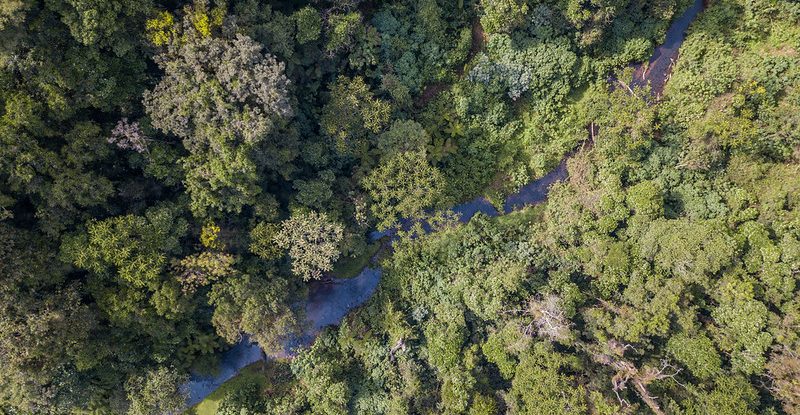Right now, much of East Africa – including Kenya, Tanzania and Rwanda – and southern Brazil are awash with water. Over the past few weeks, unusually heavy rains have pummelled homes and communities, with devastating results.
Across the world, this unprecedented flooding is displacing hundreds of thousands of families and leaving hundreds dead as rivers and sewers overflow and homes, bridges and other infrastructure are destroyed.
A humanitarian crisis is left in its wake.
It’s a grim primer of things to come. Climate change is making extreme rainfall events more likely, causing many communities to experience flooding – especially those on floodplains that don’t have the drainage infrastructure to cope.
But proactive planning, which draws on nature’s own systems for dealing with deluges, can help. And it doesn’t have to be complicated. Trees, for instance, can be powerful allies in flood prevention. Here’s how.
Slowing the flow
Trees act like umbrellas during heavy rain, intercepting rainfall in their leaves. This slows the flow of water reaching the ground, reducing the risk of flash floods from overwhelmed waterways. The delay also allows some of the water to evaporate back into the atmosphere without ever touching the ground.
Soaking up rainwater
Tree roots are natural sponges: they soak up rainwater and store it in the ground. These root systems also loosen the soil around them as they grow, reducing compaction and helping water to penetrate deeper into the soil. This reduces surface runoff and allows the water to slowly infiltrate the soil, replenishing groundwater supplies.
Preventing erosion
When heavy rain hits bare soil, it can cause erosion. This washes away valuable topsoil and increases sediment in waterways, worsening flooding. As well as slowing the flow of water to the ground, as we’ve explained above, trees also hold soil in place with their roots, and protect it with their fallen leaves, thus preventing erosion and keeping waterways healthy.
The right tree in the right place
Not all trees are appropriate in all locations, and the choice of species and site is critical to enjoying maximum flood-protection benefits and increasing the likelihood that the plantings survive long-term. For example, planting large, heavy tree species too close to waterways can actually exacerbate flood risk, while choosing species that deliver benefits for food security and livelihoods, like harvestable fruit, can boost the chances of local buy-in and protection. As such, flood-protection planting plans should always be done in collaboration with relevant stakeholders such as councils, civil society organizations and local communities.
Biological ‘bridges over troubled waters’
The climate crisis is worsening and the cost of attending to it is climbing, so it’s heartening to see cost-effective nature-based solutions that address mitigation and adaptation and are well within many communities’ reach.
As Centre for International Forestry Research and World Agroforestry (CIFOR-ICRAF) CEO Éliane Ubalijoro stated in a recent opinion piece, forests and trees “can help put an end to the steady run of climate milestones that we have become all too accustomed to seeing over the past decade…[they] are some of the most important ‘bridges’ to a future with a stable climate on an inhabitable planet.”
We want you to share Forests News content, which is licensed under Creative Commons Attribution-NonCommercial-ShareAlike 4.0 International (CC BY-NC-SA 4.0). This means you are free to redistribute our material for non-commercial purposes. All we ask is that you give Forests News appropriate credit and link to the original Forests News content, indicate if changes were made, and distribute your contributions under the same Creative Commons license. You must notify Forests News if you repost, reprint or reuse our materials by contacting forestsnews@cifor-icraf.org.
